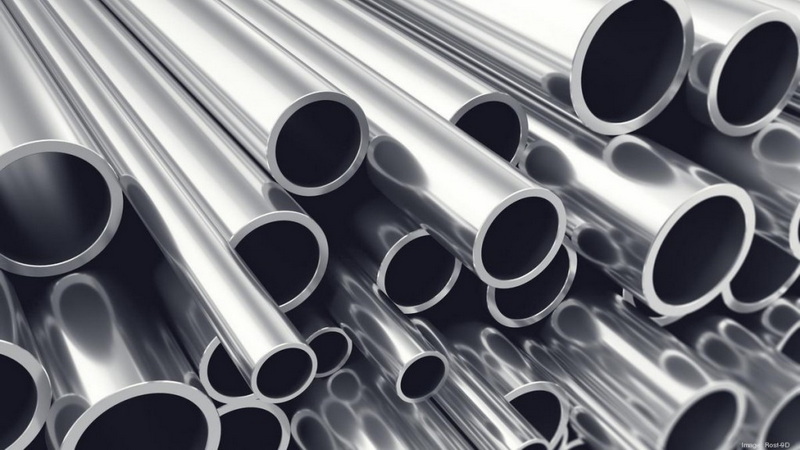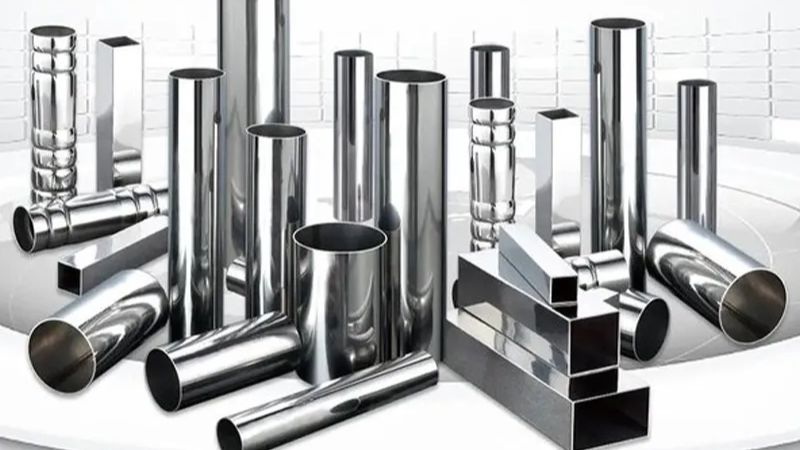English


Views: 222 Author: Tomorrow Publish Time: 2025-07-07 Origin: Site











Content Menu
● Understanding Stainless Steel Grades
● Visual Inspection of Surface Finish
● Magnetic Test for Quality Assessment
● Corrosion Resistance Testing
● Additional Tips for Inspecting Stainless Steel Quality
● FAQ
>> 1. How can I identify the stainless steel grade quickly?
>> 2. What does the magnetic test tell me about stainless steel?
>> 3. Why is surface finish important in stainless steel quality?
>> 4. How does the copper sulfate test work?
>> 5. Should I rely on just one test to assess stainless steel quality?
When purchasing stainless steel, ensuring its quality is crucial to guarantee durability, corrosion resistance, and suitability for your specific application. Stainless steel varies widely in grades, finishes, and properties, so knowing how to inspect it before buying can save you from costly mistakes. This article provides a comprehensive guide on how to inspect stainless steel quality effectively, covering key factors such as grade identification, surface inspection, magnetic testing, corrosion resistance, and chemical tests.

The grade of stainless steel is the first and most important indicator of quality. Stainless steel grades, such as 304, 316, and 430, represent different alloy compositions that affect strength, corrosion resistance, and application suitability.
- Grade 304 is the most common, offering good corrosion resistance and formability. It is widely used in kitchen equipment, architectural applications, and food processing.
- Grade 316 contains molybdenum, enhancing corrosion resistance, especially against chlorides found in marine environments and chemical processing industries.
- Grade 430 is ferritic, magnetic, and less corrosion-resistant, often used in decorative applications or where corrosion resistance is not critical.
You can identify the grade by checking for markings on the product or labels, typically denoted as AISI 304, AISI 316, etc. If the markings are missing, ask the supplier for certification or material test reports to confirm the grade. These documents provide detailed information about the chemical composition and mechanical properties of the stainless steel, ensuring it meets your requirements.
Understanding the grade helps you select the right stainless steel for your project, balancing cost and performance.
The surface finish of stainless steel is a direct reflection of its quality and manufacturing process. High-quality stainless steel should have a consistent and flawless finish.
- Look for uniformity in color and texture across the entire surface. Stainless steel typically has a shiny, smooth appearance unless it is intentionally brushed or matte finished.
- Check for scratches, dents, pits, or any imperfections. These defects indicate poor handling or inferior manufacturing. Even minor surface damages can become initiation points for corrosion.
- Run your hand over the surface to detect any roughness or uneven areas. A smooth finish not only looks better but also reduces the chance of dirt and contaminants sticking to the surface.
- Inspect edges for smoothness and absence of burrs or rough cuts. Sharp edges can be dangerous and indicate poor workmanship.
A well-finished stainless steel piece not only looks better but also resists corrosion more effectively. Different industries may require specific finishes, such as mirror polish for decorative use or brushed finishes for industrial applications.

The magnetic test is a simple and quick way to get an idea about the type and quality of stainless steel.
- Austenitic stainless steels (such as 304 and 316) are generally non-magnetic or only weakly magnetic due to their crystal structure.
- Martensitic and ferritic stainless steels are magnetic because of their different microstructures and higher iron content.
To perform the test, bring a magnet close to the steel surface:
- If the magnet does not stick or sticks weakly, the steel is likely high-quality austenitic stainless steel.
- If the magnet sticks firmly, the steel is probably martensitic or ferritic, which may be less corrosion-resistant and more prone to rust.
Note that some processing, such as cold working, can induce slight magnetism in austenitic steel, so this test should be combined with other methods for accuracy. The magnetic test is especially useful when the grade markings are missing or unclear.
Corrosion resistance is a defining feature of stainless steel quality. Poor corrosion resistance leads to rust, staining, and material failure, which can be costly and dangerous in critical applications.
- One practical test is the salt spray test, where the steel is exposed to a saltwater mist to simulate harsh environments. This test is usually done in a lab but can provide valuable information about the material's resistance to corrosion.
- For on-site testing, you can apply a copper sulfate solution on a clean steel surface:
- If copper deposits form, the steel may be carbon steel or low-quality stainless steel.
- No copper deposits indicate good corrosion resistance typical of quality stainless steel.
- Another simple method is to inspect the steel after exposure to water or humid conditions for any signs of rust or discoloration.
Corrosion resistance tests help confirm that the stainless steel will perform well in your intended environment, whether it is marine, chemical processing, or food production.
For precise identification, especially when the grade is unclear, chemical test kits are valuable tools.
- These kits use reagents that react with the steel surface, changing color based on the alloy composition.
- They can differentiate between common grades like 201, 304, and 316 by detecting elements such as nickel and molybdenum.
- Chemical testing is highly reliable for verifying the stainless steel grade on-site and can prevent the purchase of counterfeit or substandard materials.
Using chemical kits ensures you receive the exact stainless steel grade you ordered, avoiding costly mistakes and ensuring compliance with industry standards.
- Request material certifications such as Mill Test Reports (MTR) from the supplier. These documents provide detailed chemical and mechanical test results.
- Verify the manufacturer's reputation and quality assurance processes. Trusted suppliers are more likely to provide consistent, high-quality products.
- Consider the intended use of the stainless steel and select grades accordingly. For example, use 316 for marine applications and 304 for general indoor use.
- Check the packaging and handling to ensure the material has not been damaged during transport. Proper packaging prevents contamination and physical damage.
Inspecting stainless steel quality before purchase is essential to ensure long-lasting performance and value. By understanding stainless steel grades, conducting thorough visual inspections, performing magnetic and corrosion resistance tests, and using chemical test kits, you can confidently select high-quality stainless steel. Always combine multiple inspection methods and verify supplier credentials to avoid costly mistakes and ensure your project's success.

You can identify the grade by looking for markings such as AISI 304 or AISI 316 on the product or packaging. If unavailable, perform a magnetic test or use a chemical test kit for accurate identification.
The magnetic test indicates whether the stainless steel is austenitic (non-magnetic, higher quality) or martensitic/ferritic (magnetic, usually lower corrosion resistance). It's a quick way to assess steel type but not definitive alone.
A consistent and flawless surface finish helps prevent corrosion and enhances durability. Scratches, dents, or uneven finishes suggest poor quality or handling.
When copper sulfate solution is applied to stainless steel, no copper deposits should form if the steel is high quality. If copper forms, the steel may be carbon steel or low-quality stainless steel.
No, it's best to combine several methods—visual inspection, magnetic test, corrosion resistance test, and chemical testing—to get a comprehensive assessment of stainless steel quality.
Seven Requirements for External Doors And Windows of Passive Rooms
How Much Do You Know about The Design Standards for Aluminum Alloy Door And Window Dimensions?
Welding Vs Stainless Steel Fabrication: Understanding The Manufacturing Process Differences
Stainless Steel Fabrication Vs Powder Coated Steel: Durability And Cost Comparison
CNC Machining Vs Stainless Steel Fabrication: Pros And Cons for Industrial Use
Stainless Steel Fabrication Vs Carbon Steel Fabrication: Key Differences Explained
Stainless Steel Fabrication Vs Aluminum Fabrication: Which Is Right for Your Project?
Stainless Steel Grades 201 Vs 304: Cost Vs Performance Breakdown
316L Vs 316 Stainless Steel Grades: Which Is Better for Corrosion Resistance?
Comparing Austenitic Vs Martensitic Stainless Steel Grades: What You Need To Know?
